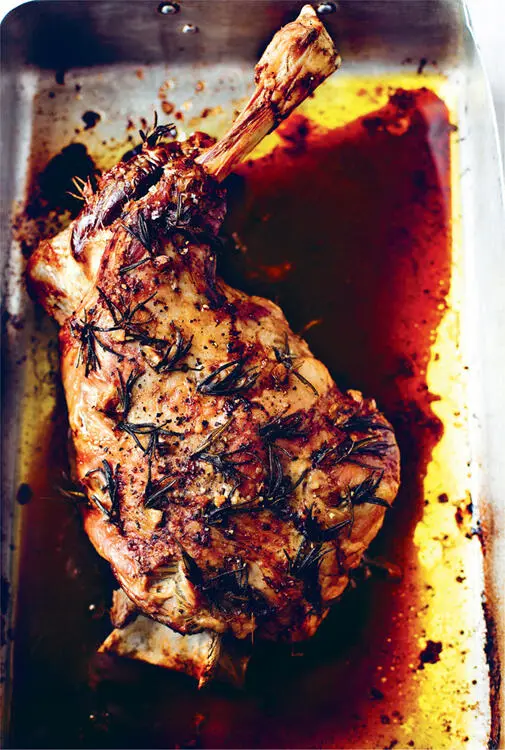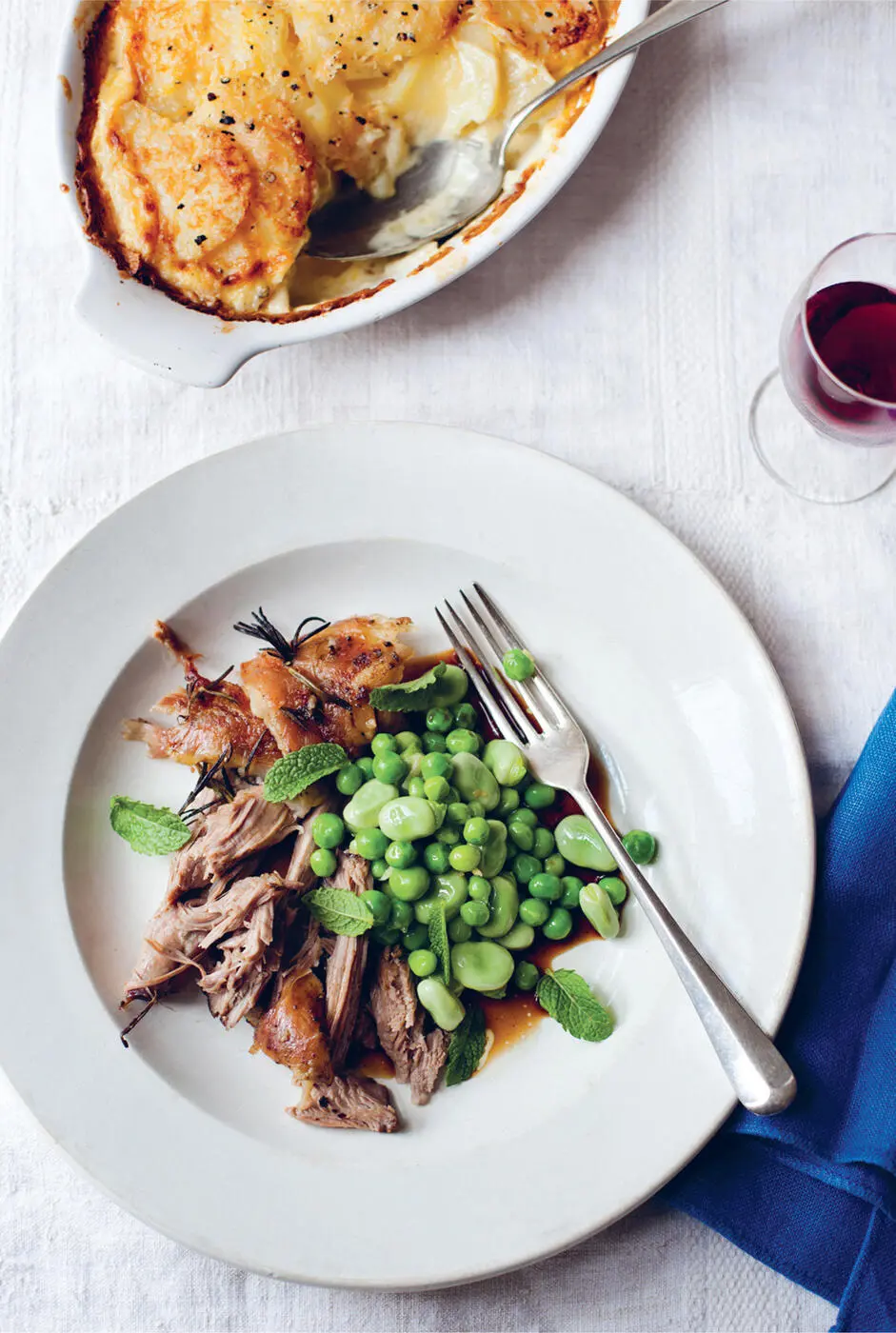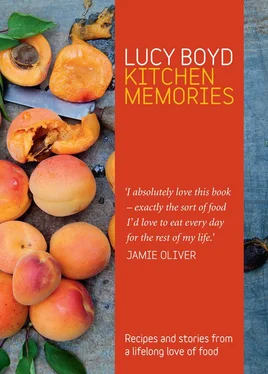When you are ready to eat the crêpes, heat a non-stick frying pan with a knob of butter, then swirl it around the pan until it starts to bubble. Take a ladleful of the batter and pour it into the pan, tipping it so that the batter spreads out evenly over the bottom of the pan. When the sides of the pancake start to stiffen and curl at the edges, flip the pancake over and brown on the other side – for a couple of minutes. Adjust the heat if it is too hot. Serve directly onto a plate with a sprinkling of the vanilla sugar and a good squeeze of lemon juice. Roll up the pancake and eat hot.
NOTE: The first pancake is usually a bit of an experiment as to how much batter to put into the pan – this should be just enough to coat the bottom. How big your pan is will dictate how much batter to use. The first one is usually chucked in my house until I have got the measure of the batter and pan.
The ingredients in a minestrone can vary according to what is available and in season. During spring I like to include asparagus, peas, broad beans, chard or early spinach. I use tinned peeled plum tomatoes in this recipe, as the fresh early varieties such as ‘Camone’ or ‘Marinda’, which both have incredible flavour, are too acidic and have not yet formed enough of the sweetness that comes from ripening in the sun later on in the year.
I love all the different textures and shades of green in this soup and the broth is a gentle and sustaining background in which to poach the vegetables.
3 celery sticks, ends trimmed
4 carrots, washed or peeled, ends trimmed
500g peas in the pod, which yields about 200g fresh peas
1 bundle of fresh green English asparagus, about 350g, tough ends snapped off, washed
1.5 litres chicken stock
olive oil
a small knob of butter
1 medium-sized red onion, peeled and finely chopped
200g chard, leaves stripped from their stalks and washed, stalks crossways cut into 5mm slices (or spring greens or crinkled spinach, removed from the stem)
3 medium-sized Charlotte potatoes (or any waxy variety will do), peeled and cut into roughly 1.5cm pieces
3 garlic cloves, peeled and finely chopped
1 × 400g tin of peeled plum tomatoes, drained of their juice
1 small bunch of fresh flat-leaf parsley, washed and dried
4 slices of ciabatta bread
100g Parmesan cheese
extra-virgin olive oil
salt and black pepper
Slice each celery stick lengthways into 5mm-thick strips, then chop the strips across about mm thick. Do the same with the carrots, so that you end up with roughly the same size pieces as the celery. Pod the peas into a bowl. Slice the asparagus spears at an angle into pieces about 5mm thick.
Bring the chicken stock to a simmer.
Add a slug of olive oil and the butter to a heavy-based pan and, as the butter starts to sizzle, add the onion, celery, carrots, chard stalks and potatoes. Turn the heat to low to medium and let the vegetables sweat gently for about minutes. They should not brown, but just soften.
Add the garlic and let it soften, then add the tomatoes and cook for a few minutes until they start to fall apart. Add enough of the hot stock so that it comes about two-thirds up the pan and let it simmer very gently for minutes or so, stirring occasionally, to help break up the tomatoes.
Check the potatoes are just cooked but not overdone, then roughly shred the chard or spinach leaves and add them to the soup, along with the peas and asparagus, making sure there is enough stock to submerge them. Simmer for about 5 minutes until they are just tender, then season with salt and pepper.
Preheat the grill. Roughly chop the parsley and grill the ciabatta. Ladle the soup into the bowls and add a scattering of parsley and a grating of Parmesan. Finish with a little extra-virgin olive oil and serve with a piece of the grilled bread.
SEA BASS WITH PORCINI AND SPRING GREENS
Charles came home the other night with three sea bass fillets. We had with us David, my stepfather, and my little niece, Ella, for the night while her parents were producing a new brother for her. None of us really knew how the evening would turn out in terms of being called and asked to take Ella to the hospital or back to her house, so we decided to just play it by ear.
In my cupboard were some dried porcini and in my fridge a bag of spring greens. Cooking the porcini with the bass imbues the delicate flesh of the fish with the most wonderfully scented flavours. Spring greens prepared simply, just shredded across the leaves and stems then blanched for a few minutes, are the only vegetable you will need and are utterly delicious. The sea bass takes about 5 minutes to cook in the bag and the spring greens about minutes. This is an incredibly easy, quick and utterly delicious supper that is also very healthy.
10g good-quality dried porcini mushrooms
500g spring greens
olive oil
2 rose garlic cloves, peeled and finely chopped
extra-virgin olive oil
4 sea bass fillets (preferably cut from a large wild fish … the fatter the better), or bream, halibut or brill fillets, each weighing 175–200g, pin-boned
1 lemon, cut crossways into thin slices
4 sprigs of fresh thyme, washed and dried
2 tbsp good-quality dry white wine
sea salt and black pepper
Place the porcini in a bowl and cover with 1½ cups of boiling water. Leave for 20 minutes in the boiling water, then strain the mushroom pieces into a bowl and retain the liquid.
Cut the stems off the spring greens at the base and then roughly shred the leaves into 3cm-wide strips. Wash under cold water.
Preheat the oven to 220ºC (200ºC fan) Gas 7. Put a pan of water on to boil for the spring greens.
Heat a swirl of olive oil in a small, heavy-based pan and, as it starts to get hot, add the garlic. Just before the garlic starts to brown, when it becomes sticky, add the porcini pieces. Toss them in the garlic and oil for a minute or so to release the flavours but don’t allow them to become crisp. Add 4–5 tablespoons of the mushroom juice and let it simmer, reduce and thicken a little for a minute. Remove from the heat.
To make the bags, cut four sheets of silver foil, each 36 × 30cm, and lay them out. Drizzle the extra-virgin olive oil lightly over the foil and season with salt and pepper. Lightly season the bass fillets and lay them, skin-side up, just off centre of the foil (as you are going to fold the foil over to make the envelope). Put a slice of lemon on each fillet, then add a small sprig of thyme and put a few pieces of the cooked dried porcini on top.
Fold the foil in half over the fish, then fold in the sides a couple of times to seal them, leaving the top open. Keep each parcel fairly flat but just tilt it slightly, then add ½ tablespoon of white wine and 1 tablespoon of the porcini juice to each bag. Fold the top opening over twice to seal the bag and to prevent any of the juices escaping. Place the bags flat on a baking tray (but don’t overlap them) and cook in the oven for 10 minutes. The bags will puff out and will be filled with air like plump pillows when they are ready.
While the bass is cooking, blanch the spring greens in the boiling, salted water for 4 minutes or so until tender. Drain and put back in the pan, then season with salt and pepper and a good drizzle of extra-virgin olive oil.
Carefully cut or tear the bags open at the top so that you can check that the fish is cooked and re-seal if necessary. Slide the fillets out onto the plates and carefully tip the juices out of the bags and over the fish. Serve with the spring greens.


SLOW-ROASTED SHOULDER OF LAMB WITH PEAS AND BROAD BEANS
Читать дальше














